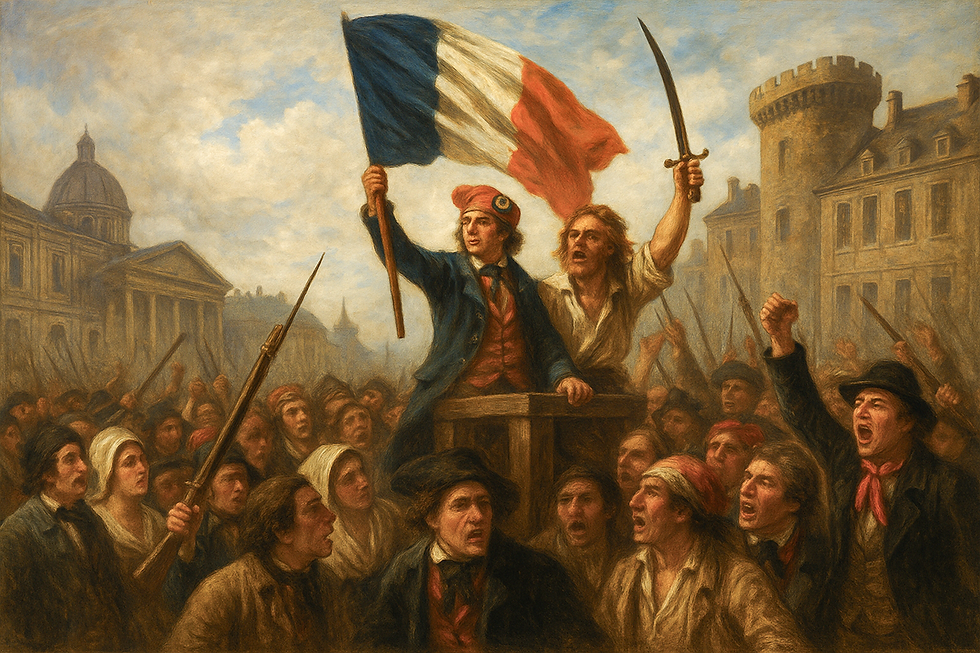Execution as Spectacle: Public Rituals of Justice in European History
- Cătălina Ciobanu
- Sep 4
- 4 min read

For centuries, justice in Europe was not confined to courts or prisons. It was enacted in the most visible and theatrical way possible: through public executions. These grim rituals, staged in marketplaces, city squares, or hilltops, were designed not only to punish criminals but also to send a powerful message to entire communities.
From medieval gallows to the guillotine of revolutionary France, executions were a theater of justice where fear, morality, and authority collided. They were not private punishments, but public events, often attended by thousands, blending law, religion, and spectacle.
This article explores how execution became a ritualized form of power in Europe, tracing its history from medieval times to the Enlightenment, and examining the fascination that lingers even today.
The Medieval Stage: Gallows, Pyres, and Public Squares
In medieval Europe, executions were deeply public events. The gallows stood outside city walls, visible reminders of justice. Burning at the stake, used for heresy and witchcraft, was staged in central squares where entire communities gathered.
These executions were not quick affairs. They were ceremonies filled with symbolism. Clergy preached sermons, officials proclaimed the crimes, and the condemned often delivered final confessions or prayers. The event was meant to display both justice and mercy — the punishment of crime and the hope of salvation for the sinner’s soul.
The community was expected to attend. Children, families, merchants, and travelers witnessed the punishment, reinforcing the moral order. Executions were lessons as much as they were punishments, reminders that crime against God or king would not be tolerated.
Torture and Theatrics: The Body as a Canvas
Executions were also theatrical in their violence. Punishments varied depending on the crime:
Thieves could be hanged or mutilated.
Heretics and witches were burned alive.
Traitors faced the most brutal punishments, such as being drawn and quartered in England or broken on the wheel in France and Germany.
The condemned body became a canvas of authority. Pain and suffering were displayed to prove the power of rulers and the seriousness of the crime. At the same time, ritual elements such as prayers, processions, and public confessions gave the execution a moral framework. This combination of horror and ritual turned executions into unforgettable spectacles that stayed in collective memory for generations.
Executions as Social Theater
Historians like Michel Foucault have described executions as a form of public theater. They were not only about punishing the guilty but also about reaffirming the bond between ruler and people. The king’s justice was enacted before the crowd, making the sovereign’s authority visible. Executions also served as communal catharsis. The crowd booed, jeered, or prayed, participating actively in the ritual. In some cases, executions even turned chaotic, with mobs rescuing or attacking the condemned, transforming the spectacle into a political act. This shows how executions were not passive displays of power but complex social events, where fear, fascination, and rebellion mingled.
The Guillotine: Democratizing Death in the French Revolution

One of the most iconic symbols of execution as spectacle was the guillotine. Introduced in 1792 during the French Revolution, it was designed to be a more humane and equal form of execution. Unlike older methods, which varied by class (nobles might be beheaded with a sword, peasants hanged), the guillotine was swift and universal.
Yet what made the guillotine extraordinary was its theatrical presence. It stood in the center of Paris, on the Place de la Révolution, and thousands attended the daily executions. The deaths of Louis XVI, Marie Antoinette, and countless others became moments of collective drama, blending justice, vengeance, and political transformation.
Paradoxically, the guillotine turned death into a spectacle of equality — every head fell the same way. It also became a cultural icon, appearing in songs, jokes, and pamphlets, reflecting both horror and fascination.
The Decline of Public Executions
By the 19th century, public executions began to decline. Enlightenment thinkers criticized them as brutal and counterproductive. Rather than reinforcing justice, they were seen as encouraging morbid fascination or even public disorder. In many countries, executions were moved behind prison walls. The last public guillotine execution in France took place in 1939. In Britain, the final public hanging was in 1868. Across Europe, execution lost its theatrical stage, becoming a hidden act rather than a spectacle.
Yet the memory of execution as theater remained powerful. Literature, art, and film continued to draw on its imagery, from Victor Hugo’s The Last Day of a Condemned Man to modern historical dramas.
Why Execution as Spectacle Still Fascinates
Even today, the fascination lingers. Tourist attractions like the Tower of London or execution sites in Paris and Prague draw crowds eager to learn about these macabre rituals. Ghost stories, legends of haunted gallows, and myths of cursed executioners testify to the cultural impact of centuries of public death.
The spectacle of execution raises enduring questions: Why did people watch? Did they come for justice, fear, or entertainment? The truth lies somewhere in between. Public executions were both lessons in morality and events of dark fascination — part legal ritual, part communal drama.
Justice in the Theater of Death
Execution as spectacle was one of Europe’s most powerful tools of social control. It turned death into public theater, where authority was displayed, morality preached, and communities bound together through shared fear and fascination. From the gallows and pyres of the Middle Ages to the guillotine of revolutionary France, executions reveal how power, belief, and performance intertwined. They remind us that justice has always been more than law — it has been ritual, drama, and spectacle.
Today, even though public executions are gone, their shadow remains in our culture, reminding us of the uneasy relationship between punishment and performance.




Comments